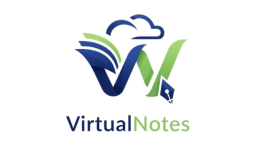Learning Management System (LMS) Guide: Boost Learning & Training Efficiency

In today’s rapidly evolving world, continuous learning and effective training are no longer optional – they’re essential. Whether you’re an educational institution looking to expand your reach, a corporation aiming to upskill your workforce, or an individual seeking to deliver online courses, a Learning Management System (LMS) stands as the central pillar of modern education and corporate training.
But what exactly is an LMS platform, and how can it revolutionize the way we learn and teach? This comprehensive guide will explain everything you need to know about Learning Management Systems, their benefits, key features, and how to choose the right one to boost learning & training efficiency.
What is an LMS? Your Digital Learning Hub
A Learning Management System (LMS) is a software application designed for the administration, documentation, tracking, reporting, automation, and delivery of educational courses, training programs, or learning and development (L&D) programs. Essentially, it’s a digital hub where all aspects of online learning are managed.
Think of an LMS as the backbone of your online education or employee training initiatives. Instead of juggling emails, spreadsheets, and various tools, an LMS solution brings everything under one roof, providing a structured environment for learners to access materials and for administrators to manage the learning process efficiently.
Why Use a Learning Management System? The Benefits Go Beyond Convenience
Implementing a robust LMS offers a multitude of advantages that go far beyond just putting content online. Here are the key benefits:
- Centralized Content Management: An LMS provides a single repository for all your e-learning content, including videos, documents, quizzes, and presentations. This ensures consistency and easy access for all users.
- Streamlined Course Delivery: From enrollment to completion, an LMS automates the entire course delivery process, making it seamless for both learners and administrators.
- Enhanced Performance Tracking & Reporting: One of the most powerful features of an LMS is its ability to track learner progress, completion rates, and assessment scores. Reporting & analytics provide valuable insights into learning effectiveness and identify areas for improvement. This is crucial for demonstrating measurable impact in training.
- Improved Student Engagement: Many LMS platforms offer features like gamification, discussion forums, and collaboration tools to make the learning experience more interactive and engaging.
- Scalability: An LMS allows you to easily scale your online learning programs to accommodate hundreds or thousands of users without significant logistical hurdles, making it ideal for large organizations or growing educational institutions.
- Cost-Effective Training: By moving training online, you can significantly reduce expenses related to travel, venues, printed materials, and instructor time.
- Flexibility and Accessibility: Learners can access courses anytime, anywhere, on any device (including through mobile learning applications), promoting lifelong learning and continuous skill development.
- Compliance and Certifications: For industries requiring regular compliance training, an LMS helps track mandatory courses, manage certifications, and ensure your organization meets regulatory requirements.
- Personalized Learning Paths: Advanced LMS platforms can offer tailored learning experiences based on individual learner needs and progress, promoting more effective personalized learning.
Essential Features of a Powerful LMS Platform
While specific features vary, a truly effective LMS solution should include:
- User Management: Registering, enrolling, and managing different user roles (learners, instructors, administrators).
- Course Management: Creating, organizing, scheduling, and publishing courses.
- Content Management: Uploading, storing, and organizing various content formats (documents, videos, audio, SCORM packages, xAPI data).
- Assessment Tools: Creating quizzes, tests, assignments, and surveys to evaluate learning outcomes.
- Progress Tracking & Analytics: Robust reporting on learner activity, course completion, scores, and overall performance.
- Communication & Collaboration Tools: Discussion boards, chat functions, announcement features, and virtual classroom integrations.
- Mobile Responsiveness: Ensuring the platform is accessible and user-friendly on smartphones and tablets.
- Security Features: Protecting sensitive user data and intellectual property.
- Customization & Branding: Ability to tailor the platform’s look and feel to match your organization’s brand.
- Integrations: Connecting with other essential systems like HR platforms, CRM tools, or video conferencing software.
Types of Learning Management Systems: Finding Your Fit
LMS platforms come in various forms to suit different needs and budgets:
- Cloud-Based LMS (SaaS LMS): This is the most common type, hosted by the vendor and accessed via the internet. It’s generally more affordable upfront, requires no technical maintenance from your end, and is highly scalable. Ideal for most businesses and educational institutions.
- On-Premise LMS: Software installed and managed on your own servers. Offers maximum control and customization but requires significant IT resources and upfront investment. More common for very large organizations with specific security or integration needs.
- Open-Source LMS: Free to use and modify, offering high flexibility. Examples include Moodle and Canvas (community version). Requires technical expertise for setup, maintenance, and customization.
- Proprietary LMS: Commercial software developed and owned by a company. Offers dedicated support and often more polished features but comes with licensing fees.
Choosing the Best LMS: Key Considerations
Selecting the right LMS platform is critical for the success of your learning initiatives. Here’s what to consider:
- Identify Your Goals: Are you focusing on employee training, online education for students, compliance training, or skill development? Your primary objective will dictate the necessary features.
- Define Your Audience: Who are your learners? Their technical proficiency, preferred learning styles, and access to devices (e.g., strong need for mobile learning) will influence your choice.
- Determine Your Budget: Account for not just licensing fees, but also implementation costs, potential customization, training, and ongoing support.
- Assess Required Features: Make a list of essential features (e.g., assessment tools, reporting & analytics, gamification) versus “nice-to-have” features.
- Evaluate User Experience (UX): A user-friendly interface is crucial for adoption and student engagement. Test demos thoroughly.
- Consider Scalability and Integrations: Will the LMS grow with your needs? Can it integrate seamlessly with your existing HR systems, CRMs, or other educational software?
- Vendor Support and Training: What kind of support does the vendor offer? Is comprehensive training available for your administrators and instructors?
The Future of Learning is Managed
The adoption of Learning Management Systems continues to grow rapidly as organizations and educators recognize their indispensable role in facilitating effective, scalable, and engaging learning experiences. From corporate training to K-12 and higher education, an LMS empowers you to streamline operations, track progress, and ultimately achieve better learning outcomes.








